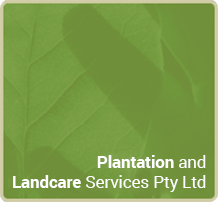Rising water tables are becoming a major issue across the Wheatbelt of WA. Once the watertable breaks the surface the land is unsuitable for profitable cereal cropping. This usually occurs in the valley floors where drainage is poor. Cropping low lying salt affected country is not an option with production cost so high.
PALS has been become a state frontrunner in designing and implementing fodder reserves on valley floor salinity. Incorporating fodder gives the landholder the option to create profitable grazing cells on what was unproductive soil types.
Case Study
Salinity Fodder
Hyden West Australia
Problem:
Valley floors that were becoming salt affected as a result of rising watertables and waterlogging. Although the client had over 20,000 acres and cropped some 15,000 acres per annum he was increasingly aware of the rising water tables across his valley floors. These valley floors were no longer profitable for traditional cropping.
Solution:
His objective was to establish fodder reserves throughout his farm which would feed sheep in late summer and/or early winter months when feed quality and quantity was low. This took the pressure off his pastures and enabled him to confidently keep high sheep flocks throughout these months. Densely planted saltbush will also help migrate the watertable over time.
With sheep prices rising he is now able to increase his sheep numbers and hold onto stock in dry years – when other farmers are destocking.
Turning a negative problem of salinity into a positive long-term asset to the property is paramount to successful landcare.
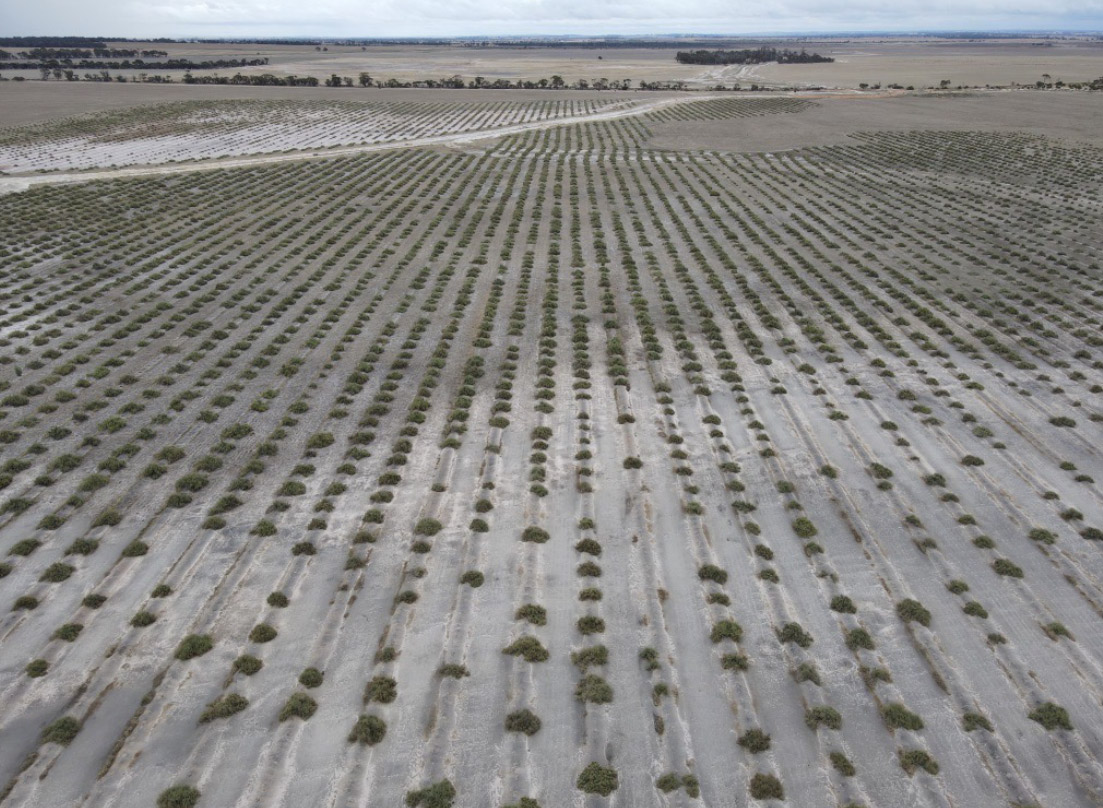
9 months after planting
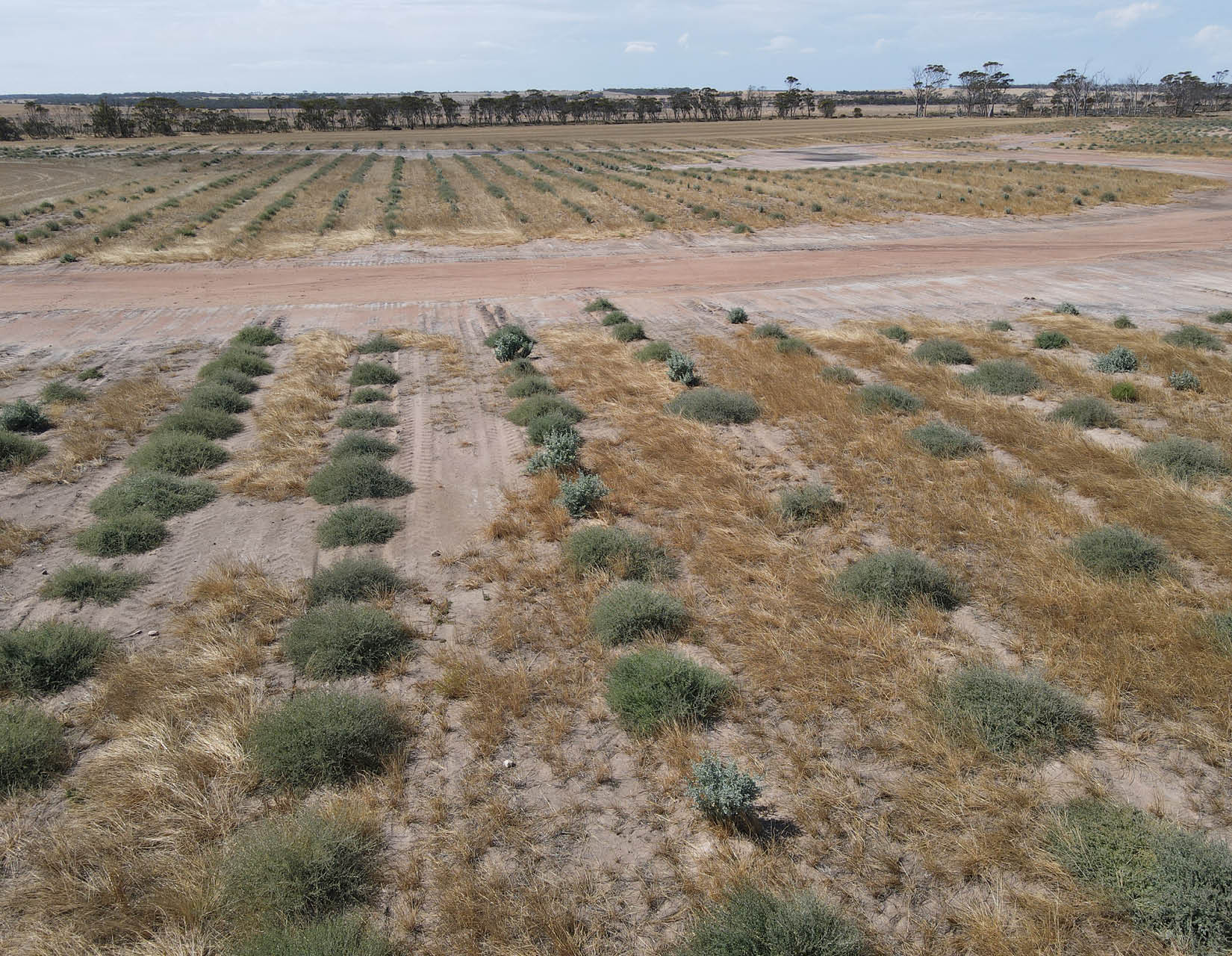
18 months after planting
Saltbush has been grazed hard and has recovered well
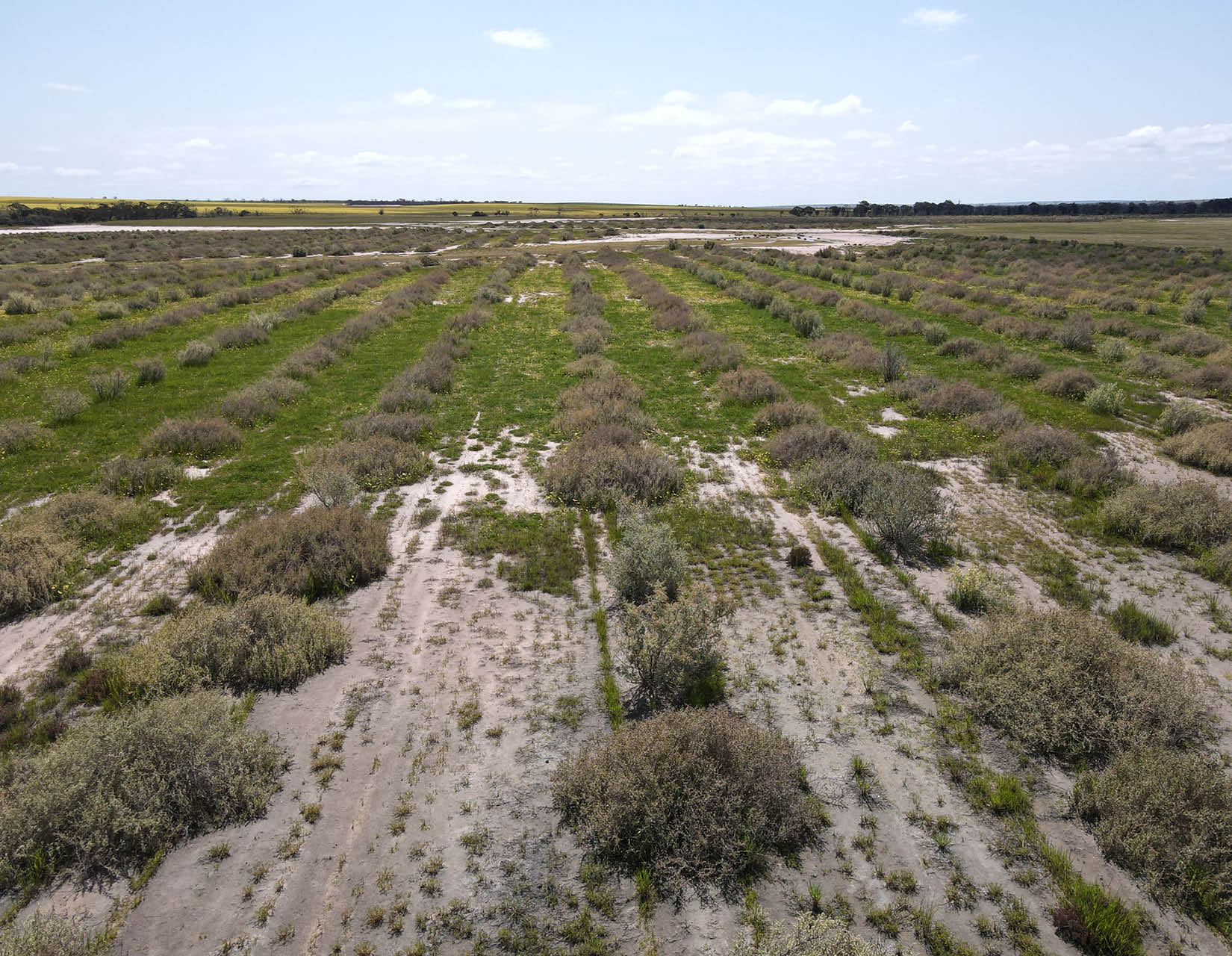
Three years after planting
Grass’s and medics have started to regerminate between the rows as a result of the water table decreasing
Advantages of Saltbush
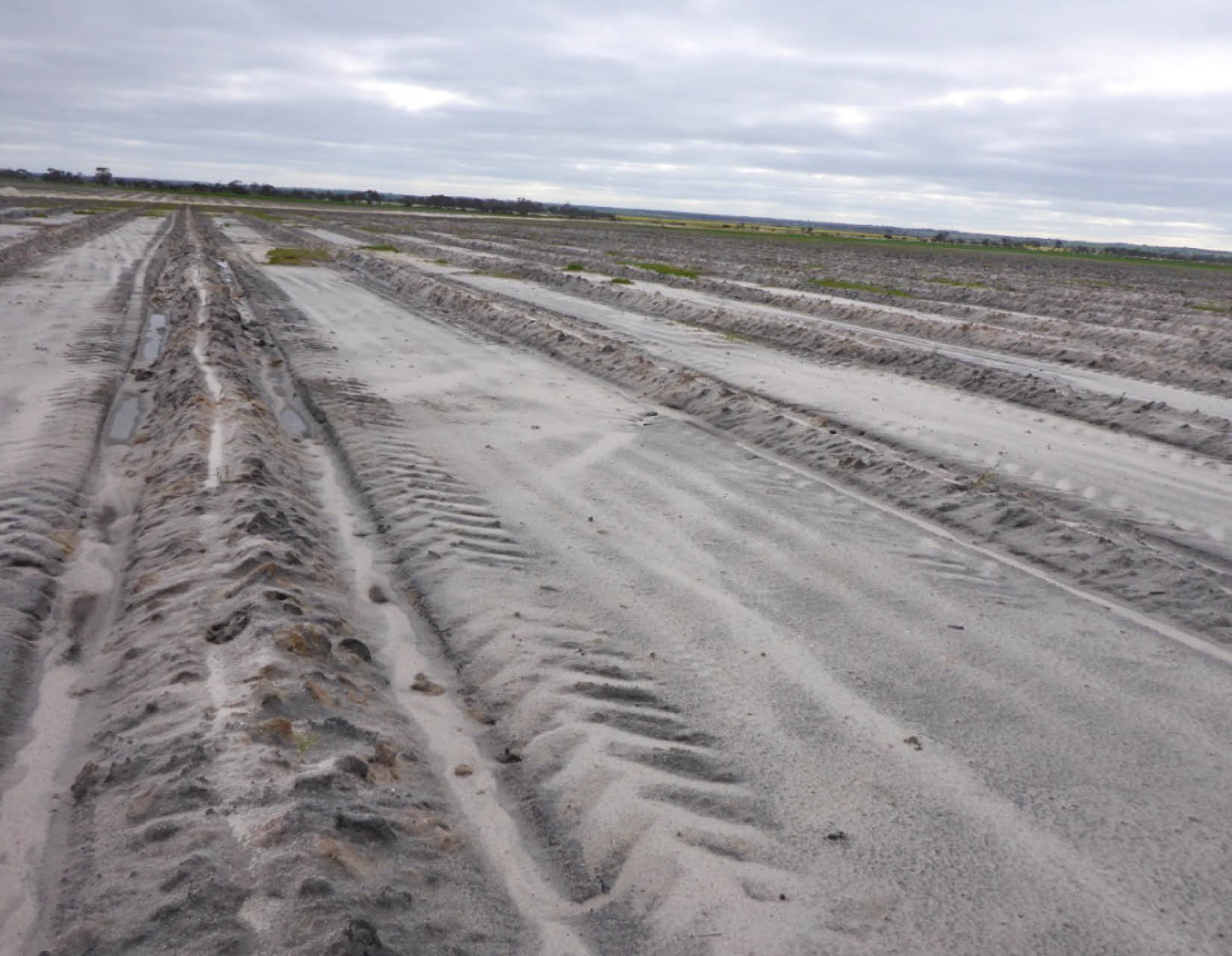
SOIL MOUNDING
On salt affected soils mounding helps elevate the saltbush from the harsh salt affected soils
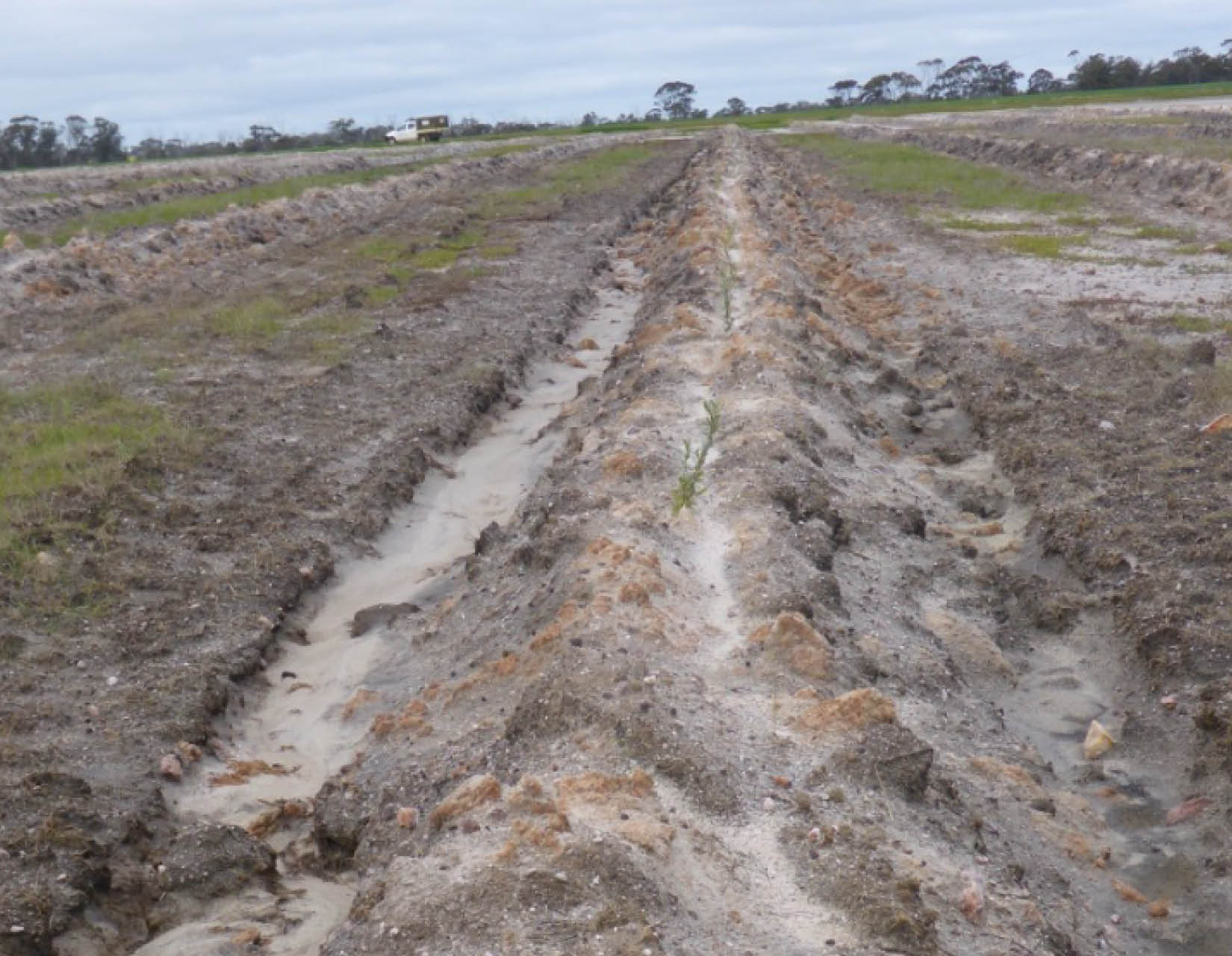
WELL FORMED MOUNDS
Newly planted saltbush elevated on well-formed mounds
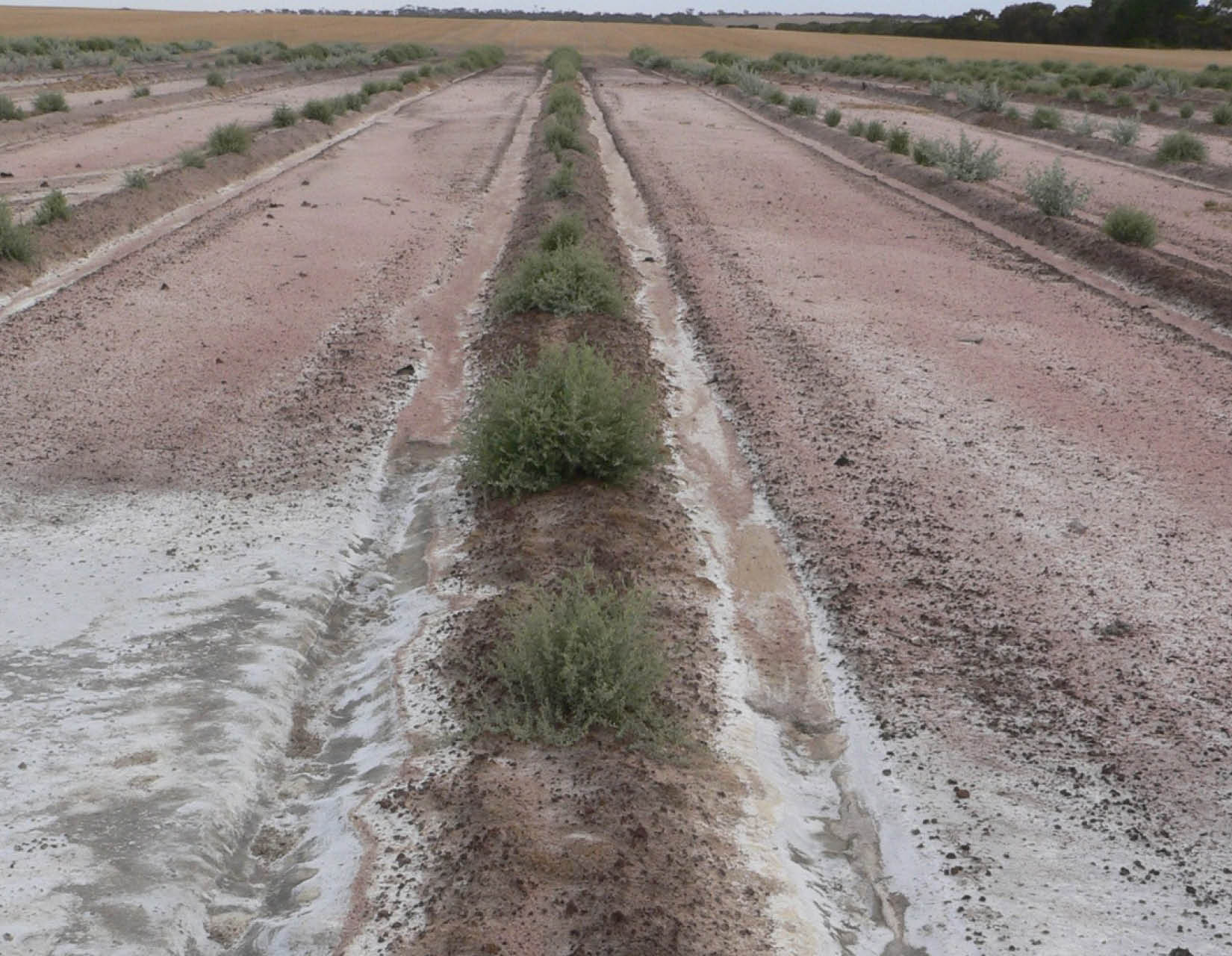
ESTABLISHING SALTBUSH
Saltbush has a good tolerance to salt affected soils. Site preparation is the key to establishing trees and shrubs on salt affected soils
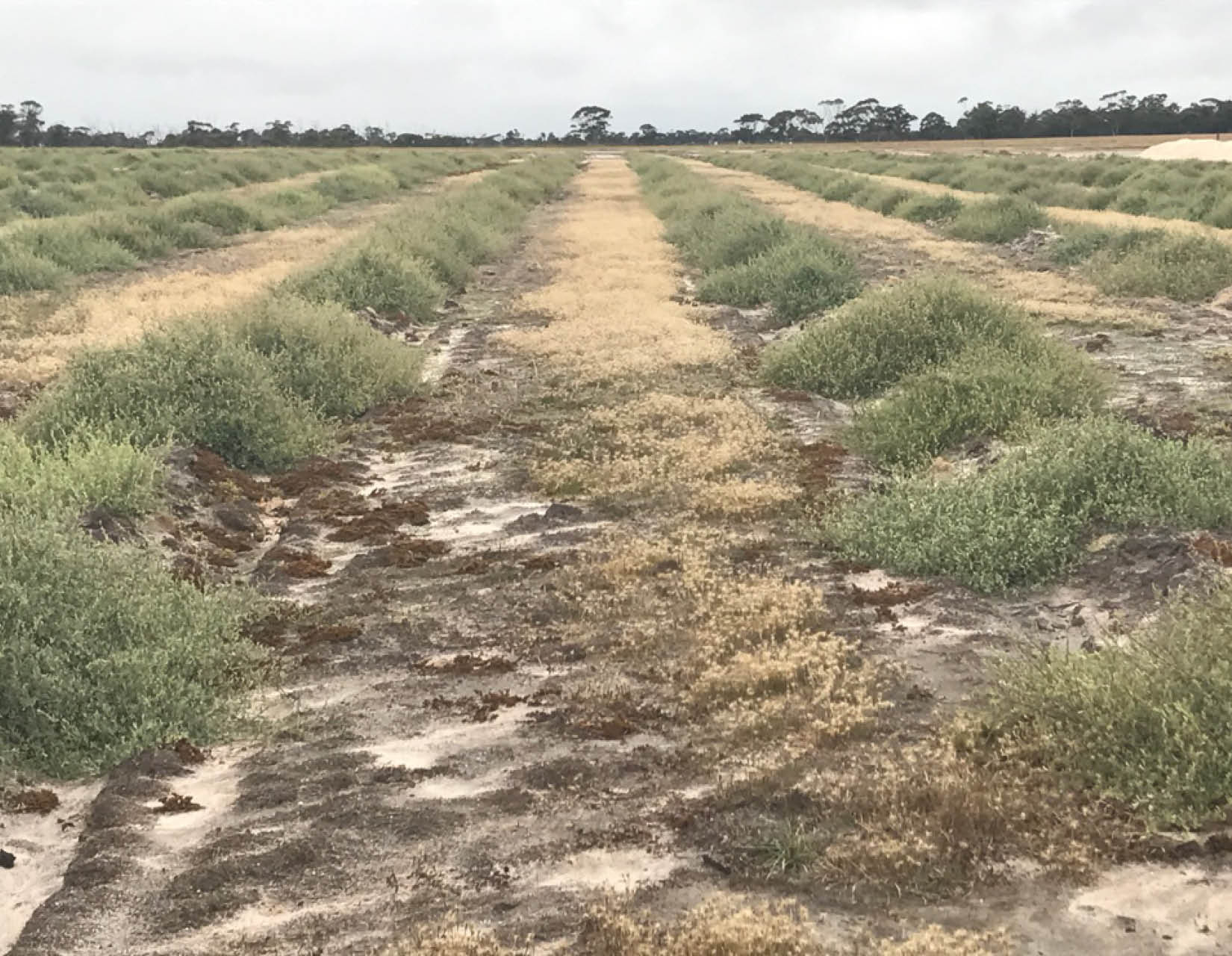
Eight month old saltbush
Eight month old saltbush can be lightly grazed in slowly integrate with the overall farm paddock grazing rotation
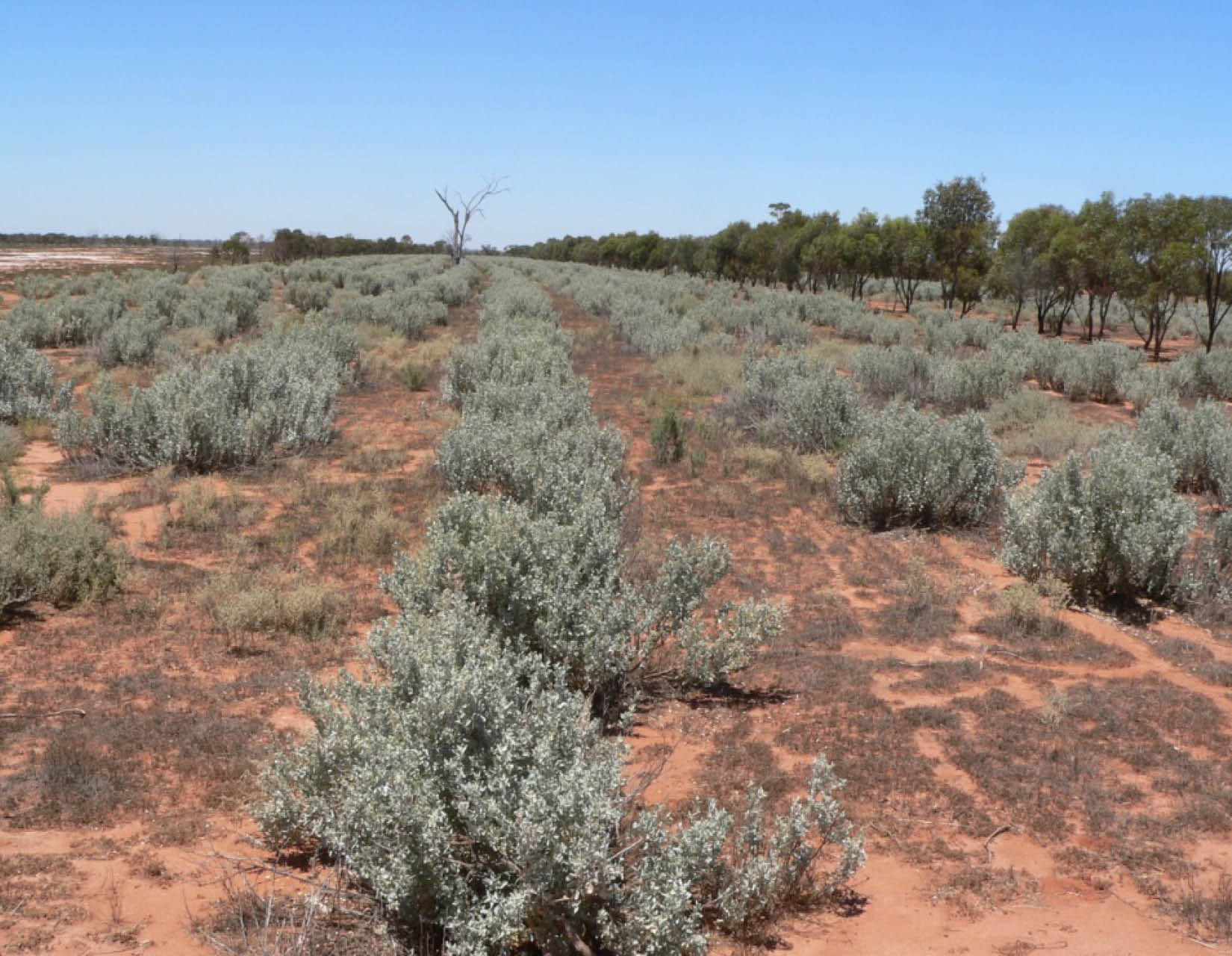
ESTABLISHED SALTBUSH
Low yielding soil types with a high-water table is ideal for a saltbush reserve. (Bencubbin West Aust.)
